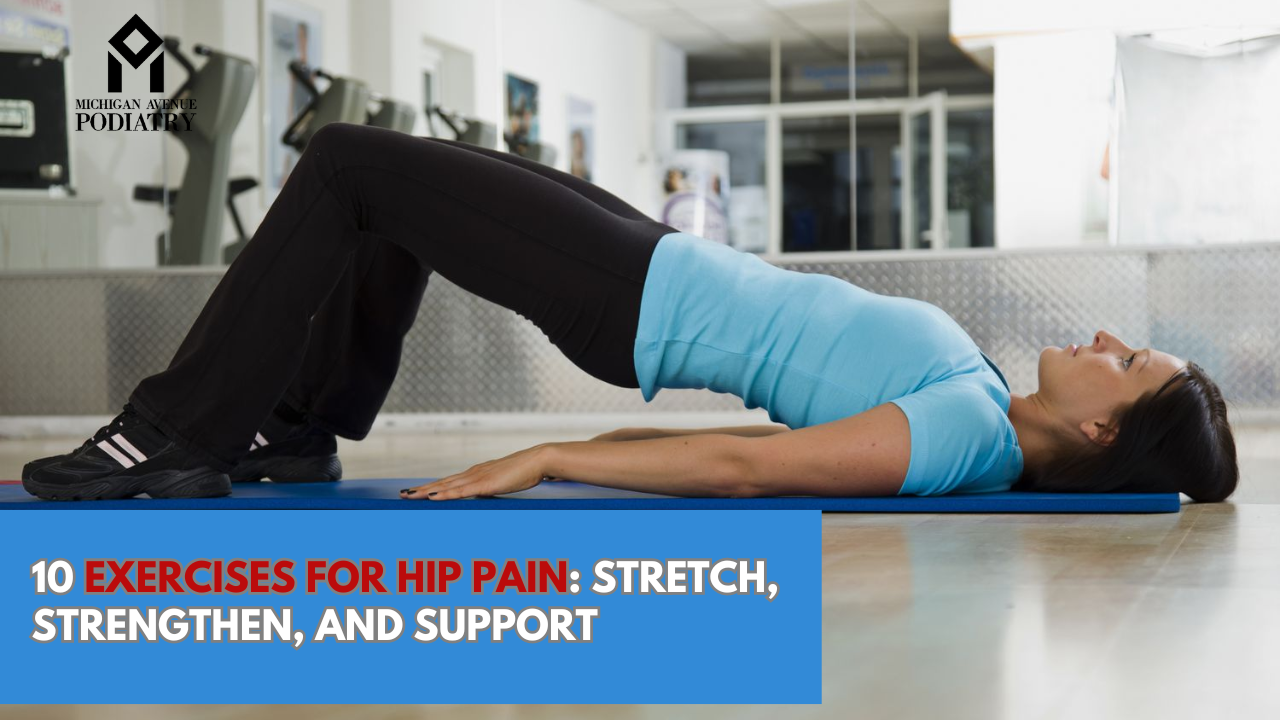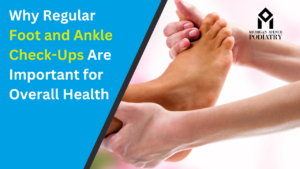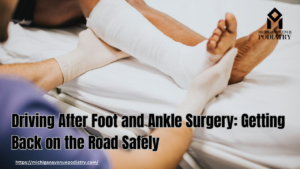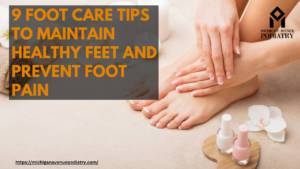Hip pain can significantly impact daily activities and overall quality of life, especially when accompanied by lower back pain. However, incorporating targeted exercises into your routine can help alleviate discomfort, improve flexibility, and strengthen the muscles supporting the hips and lower back. In this blog post, we’ll explore 10 effective exercises recommended by podiatrists and fitness experts to manage hip pain and promote overall hip health.
- Hip Flexor Stretch:
- Start in a kneeling position with one knee on the ground and the other foot flat on the floor in front of you.
- Gently push your hips forward until you feel a stretch in the front of your hip.
- Hold for 20-30 seconds, then switch sides.
- Repeat 2-3 times on each side.
- Piriformis Stretch:
- Begin by lying on your back with both knees bent and feet flat on the floor.
- Cross one ankle over the opposite knee, creating a figure-four shape.
- Use your hands to gently pull the uncrossed leg towards your chest until you feel a stretch in the buttocks.
- Hold for 20-30 seconds, then switch sides.
- Repeat 2-3 times on each side.
- Glute Bridge:
- Lie on your back with your knees bent and feet flat on the floor, hip-width apart.
- Engage your core and glutes as you lift your hips towards the ceiling, forming a straight line from shoulders to knees.
- Hold for 2-3 seconds, then lower back down.
- Repeat for 10-15 repetitions.
- Clamshell:
- Lie on your side with your hips and knees bent at a 90-degree angle, resting your head on your bottom arm.
- Keeping your feet together, open your top knee as far as you can while maintaining control.
- Hold for 2-3 seconds, then return to the starting position.
- Repeat for 10-15 repetitions on each side.
- Side-Lying Leg Lift:
- Lie on your side with your legs straight and stacked on top of each other.
- Lift your top leg towards the ceiling, keeping it straight and engaging the outer thigh muscles.
- Hold for 2-3 seconds, then lower back down.
- Repeat for 10-15 repetitions on each side.
- Quadruped Hip Extension:
- Start on your hands and knees, with your wrists directly under your shoulders and knees under your hips.
- Keeping your knee bent at a 90-degree angle, lift one leg straight back behind you, squeezing the glutes.
- Hold for 2-3 seconds, then lower back down.
- Repeat for 10-15 repetitions on each side.
- Hip Abduction:
- Sit on a chair with both feet flat on the floor.
- Lift one foot off the floor, keeping the knee straight, and slowly move the leg out to the side.
- Hold for 2-3 seconds, then return to the starting position.
- Repeat for 10-15 repetitions on each side.
- Standing Hip Flexor Stretch:
- Stand upright with one foot in front of the other in a staggered stance.
- Bend your front knee slightly and shift your weight forward, keeping your back leg straight.
- You should feel a stretch in the front of the hip of the back leg.
- Hold for 20-30 seconds, then switch sides.
- Repeat 2-3 times on each side.
- Hip Rotations:
- Lie on your back with your knees bent and feet flat on the floor.
- Slowly lower both knees to one side, keeping your shoulders on the ground.
- Hold for 10-15 seconds, then return to the starting position.
- Repeat on the other side.
- Perform 10-15 repetitions on each side.
- Standing Quadriceps Stretch:
- Stand upright with your feet hip-width apart.
- Bend one knee and bring your foot towards your buttocks, grabbing your ankle with your hand.
- Keep your knees close together and gently pull your foot towards your buttocks until you feel a stretch in the front of your thigh.
- Hold for 20-30 seconds, then switch sides.
- Repeat 2-3 times on each side.
Conclusion: Incorporating these 10 exercises into your routine can help alleviate hip pain, improve flexibility, and strengthen the muscles supporting the hips and lower back. However, it’s essential to consult with a podiatrist or healthcare professional before starting any new exercise program, especially if you have existing hip or lower back issues. Remember to listen to your body and progress gradually to avoid overexertion or injury.




